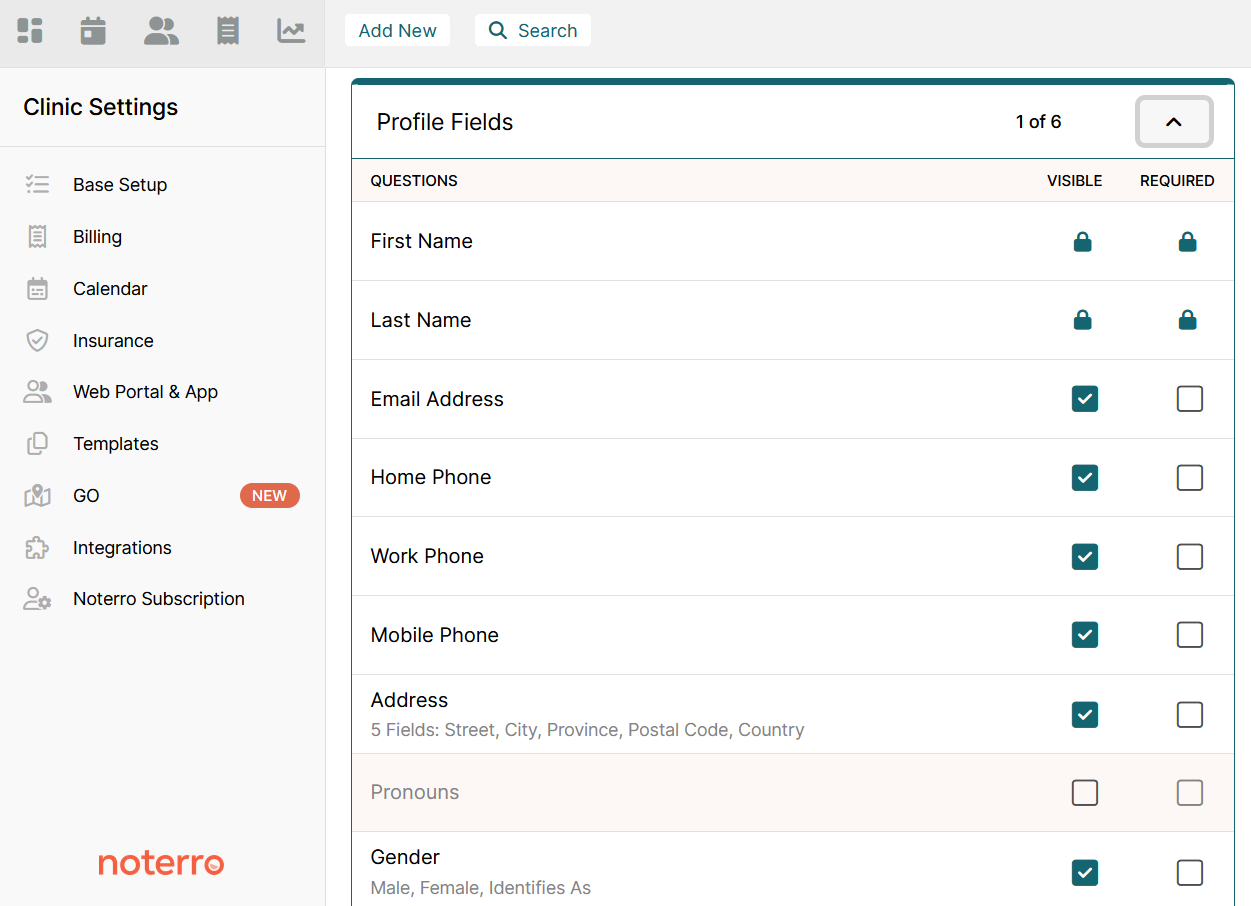Cyber Monday Offer is Here! Subscribe by December 5 to Get 3 Months Free!
Learn More
Table of Contents

Experience Better Practice Management Today!
Starting at $28.05/month
No Credit Card Required

Experience Better Practice Management Today!
Starting at $30/month
No Credit Card Required
If you're running your own clinic or building a mobile practice, you’re already juggling a lot. The clinical side is just one part of the job. There’s admin, scheduling, billing, marketing, and of course, making time for your own well-being.
Many of the chiropractors I work with are always looking for new ways to boost revenue without adding more appointments or staff. And one method that keeps showing up—quietly but effectively—is affiliate marketing.
With the U.S. chiropractic market expected to hit $28.71 billion by 2030, this is a growing space. Affiliate marketing gives you a way to participate in that growth, without hiring, renting more space, or burning out.
Let’s break it down.
Affiliate marketing means earning commissions by recommending third-party products or services. You share a link, someone clicks and buys, and you earn a percentage.
If you're already suggesting certain pillows, supplements, or posture tools to patients, why not get paid when they buy them?
People already trust your recommendations. They look to you for guidance on recovery tools and lifestyle changes. That trust drives higher conversions compared to general online influencers.
You’re not pitching. You’re helping. You’re pointing patients toward solutions you already stand behind.
Also read: How to Prevent Burnout as a Chiropractor: 8 Simple Tips
I've seen these strategies work for chiropractors across various practice types. Here's how you can implement them in your clinic:
Think foam rollers, TENS units, lumbar supports, or wedge pillows, all of the tools you use in practice and trust.
Set up an Amazon Associates account or partner directly with brands you love. Then build a page on your site: “What Dr. [Name] Recommends.” Add affiliate links.
Pro Tip: Using Noterro, a clinic management software, you can also include those product suggestions in automated email reminders and follow-up emails.
Bonus read: 6 Chiropractic Loyalty Program Ideas to Retain Clients
Supplements are a natural extension of holistic care and can be introduced during patient consultations or in aftercare emails.
Focus on supplements that complement chiropractic care, such as magnesium for muscle relaxation, omega-3s for inflammation reduction, or specialized joint support formulas.
Platforms like Fullscript, Wellevate, and Standard Process offer particularly strong affiliate programs for healthcare practitioners. These platforms not only pay commissions but also allow you to create custom dispensaries where patients can order supplements directly.
One chiropractor I work with added a custom Fullscript dispensary link to his aftercare emails and now earns an additional $1,200 monthly in passive income – all from products he was already recommending.
Pro Tip: You can use Noterro, a clinic management software, to capture emails through digital intake forms and keep them in your list for future product updates.

A helpful read: The Future of Chiropractic: 12 Trends & Technologies to Watch in 2025
Creating content builds trust, and trust sells. You don’t need fancy gear or big budgets. A quick blog titled “3 Stretches for Desk Workers” or a YouTube shorts or an Insta reel about neck pillows that actually work can go a long way.
Embed affiliate links to tools or supplements you mention. Dr. Todd Sullivan does this well—every video includes recommended tools in the description.

Your patient communication is a perfect place to integrate affiliate marketing naturally.
Include a monthly "What We're Loving" section in your newsletter featuring supplements, tools, or resources that might benefit your patients. Make sure these recommendations are seasonal and relevant, like posture tools during "back to school" season or gift guides during holidays.
This approach works because patients are already engaging with your emails. With Noterro’s marketing feature, you can trigger these emails based on appointment types or care plans using the Mailchimp integration.
Bundling related products creates more value for patients while potentially increasing your affiliate earnings.
For example, create an "At-Home Neck Relief Kit" or "Posture Reset Toolkit" that includes all the items a patient might need to support their care between visits.
List these bundles on a dedicated landing page on your website, or create downloadable guides with QR codes that you can hand out during consultations or mobile visits.
One mobile chiropractor I know created a "Desk Worker Survival Kit" guide that earned him over $5,000 in affiliate commissions last year, simply by bundling products he was already recommending individually.
Extend your affiliate marketing beyond physical products by partnering with complementary wellness providers in your area.
Develop referral relationships with massage therapists, physiotherapists, nutritionists, personal trainers, or medical spa. Many practitioners offer 10-15% commission on referred clients, creating a win-win situation where you both benefit from cross-promotion.
You can also host joint webinars or in-person events with these partners, offering exclusive affiliate deals to attendees. This not only builds your professional network but also creates multiple streams of affiliate income.
Interesting read: Chiropractic and Massage Therapy: A Comprehensive Healing Approach
Social media platforms offer perfect opportunities for sharing quick recommendations in an authentic way.
Create Instagram posts like "3 Tools I Recommend to Every Patient with Low Back Pain" with affiliate links in your bio. On TikTok, short demos of how to use tools correctly can drive significant traffic.
Stories and Reels work particularly well for showcasing "quick wins" that patients can try at home. The visual nature of these platforms makes them ideal for demonstrating products in action.
Remember to disclose your affiliate relationships appropriately on social media, usually with simple tags like #affiliate or #ad, to maintain transparency with your audience.
Bonus read: Chiropractor's Guide to Attracting More Clients: 12 Proven Strategies
Your educational content provides natural opportunities for relevant product recommendations.
Blog topics like "Best Sleep Positions for Neck Pain" can include affiliate links to pillows or mattress toppers that support proper alignment. "Home Exercises for Sciatica" can link to recommended resistance bands or stability balls.
Picking the right products to promote matters just as much as how you promote them. Choose items that fit your patients’ needs and your standards. This ensures affiliate marketing feels natural and adds real value. Below are key points to help you decide what to recommend.
Focus on products you already recommend during care. This ensures alignment with your clinical approach and makes promotion feel natural.
The best affiliates for chiropractors are typically posture tools, wellness apps, ergonomic office equipment, sleep aids, and recovery tools – all items that support your treatment goals.
Only promote products you've used or thoroughly vetted. Your reputation is your most valuable asset, and it depends on the quality of what you endorse.
Ask yourself: "Would I recommend this to my family members?" If the answer isn't an enthusiastic yes, it's not worth promoting.
Average affiliate commissions range from 5% to 30%, depending on the product category. Physical products typically offer lower rates (5-15%) while digital products often pay higher commissions (20-50%).
Pay attention to cookie duration as well – this is how long you'll receive credit after someone clicks your link. Amazon offers a short 24-hour cookie, while many direct brand programs offer 30 to 90-day cookies, giving you more chances to earn from delayed purchasing decisions.
Also read: 9 Local SEO Tactics for Chiropractic Practices to Outrank Competition
Choosing the right affiliate network makes promoting products easier and more rewarding. Below are popular general, healthcare-focused, and tech platforms that fit well with chiropractic practices.
Bonus read: Chiropractic Email Marketing Playbook: 11 Proven Strategies to Minimize No-Shows
Success with affiliate marketing comes down to a few simple habits. Focus on educating your audience, tracking results, and staying consistent to build trust and steady income.
Your recommendations should feel like informed advice, not a sales pitch. Explain why you believe in a product and how it can help your patients achieve specific health goals.
Use tools like Bitly or Pretty Links to monitor which products and which channels drive the most clicks and conversions. This data helps you refine your strategy over time.
Mention products across multiple touchpoints – social media, blogs, intake forms, and aftercare. Consistent exposure increases the chances of conversion.
Always add a simple disclaimer like: "Some of the links above are affiliate links. If you click and buy, I may earn a small commission—at no extra cost to you."
This transparency builds trust and is required by the FTC. Your patients will appreciate your honesty.
Try different formats – product videos, bundles, newsletters – to find what converts best with your specific patient base. What works in one practice may not work in another.
Related read: How to Market Your Chiropractic Business to Athletes
Avoid these pitfalls that I've seen trip up chiropractors new to affiliate marketing:
You don’t need to become a YouTuber or content machine to make this work. Affiliate marketing works best when it fits naturally into what you’re already doing—educating patients, sharing tools, and building trust.
Start with one product. Add it to a follow-up email. Track clicks. That’s it. From there, build slowly. Add bundles, blog posts, videos, or a resource page.
If you’re already using Noterro, you’ve got a head start. Many of the follow-ups and automations you need are already there.
Let your knowledge work for you. Let your content keep working after you’re done with patients for the day. Affiliate marketing won’t replace your practice. But it can absolutely support it.
Absolutely, it can—if you’re not careful. Your reputation depends on what you endorse. Only promote products you truly trust and would recommend to family or close friends. Being transparent with patients about affiliate relationships builds trust. When done thoughtfully, affiliate marketing enhances your credibility by showing you support solutions that genuinely help.
Since you’re not the seller, returns and complaints are managed by the product vendor. However, listen carefully to your patients’ feedback and help them navigate the return process if needed. Use their input to reassess whether to continue recommending that product. Honest communication shows you care about their experience, which maintains your professional relationship.
Yes, you can. Embedding affiliate links in post-visit emails, intake forms, or patient education materials via Noterro is a smart way to share helpful products naturally. Just ensure the links add real value and are disclosed appropriately. Keep the patient’s experience front and center to avoid feeling pushy.
Start small. Pick one or two products you already recommend, add affiliate links in a follow-up email or on your website, then track clicks and conversions using tools like Bitly or Pretty Links. If you see consistent engagement and some sales, you know it’s worth expanding. This low-risk approach keeps your effort efficient.
Yes, you can. Affiliate marketing works well in small, trusted communities too - like your existing patient base, local networks, or professional groups. Sharing recommendations directly during consultations, in emails, or via patient newsletters often converts better than mass advertising. Quality matters more than quantity here.
Tags



